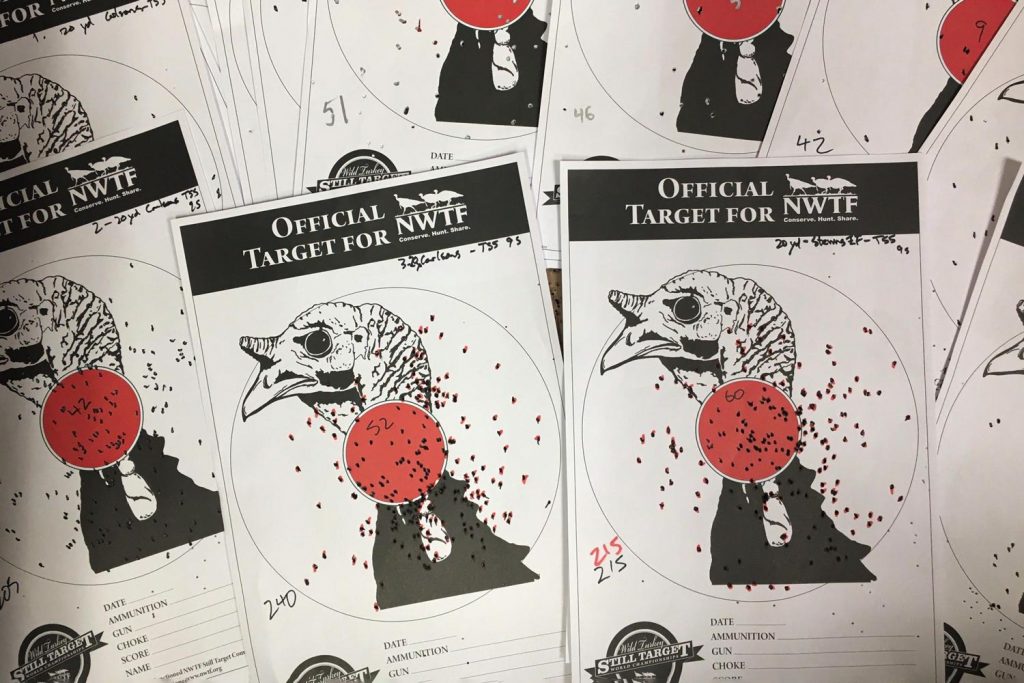Turkey hunting is often considered one of the most challenging types of hunting. The wild turkey is a wily and elusive gamebird that can frustrate even experienced hunters. However, with proper preparation and skill, turkey hunting can also be immensely rewarding. In this article, we’ll take an in-depth look at what makes turkey hunting difficult, tips for being successful, and whether turkey hunting is as hard as its reputation suggests.
What Makes Turkey Hunting Difficult
There are several factors that contribute to the challenge of hunting wild turkeys:
-
Wariness – Turkeys have incredibly sharp eyesight and hearing. They are very in-tune to their surroundings and wary of anything unnatural. Even the snap of a twig underfoot can spook a turkey. Their alertness makes it hard for hunters to sneak up on them.
-
Elaborate courtship – In spring, male turkeys are fixated on breeding. They will be absorbed with finding and courting females rather than eating. This makes decoys and calling vital for luring in spring toms. However, even the best calling may not distract a tom from an eager hen.
-
Keen senses – A turkey’s vision allows it to distinguish colors and minute movements from up to 100 yards away Their hearing can pick up frequencies beyond human range They can even taste and smell danger in the air. Outsmarting a turkey’s super-charged senses is no easy task.
-
Habitat challenges – Turkeys thrive in dense oak forests brushy fencerows and grassy agricultural areas. These habitats make stealthy approaches difficult. The vegetation also limits effective shotgun ranges.
-
Nomadic nature – Turkeys are constantly on the move, especially in spring. They cover large feeding and breeding areas daily. Locating and intercepting them is harder than for deer or other game that use smaller home ranges.
-
Limited seasons – Most states only allow turkey hunting during defined spring seasons of 2-6 weeks. This short window gives hunters very limited time to scout and hunt. The fall turkey season is even more restrictive.
Tips for Hunting Turkeys Successfully
While challenging, consistently bagging spring gobblers is possible with the right approach:
-
Scout thoroughly – Locate flocks, identify roost sites, map travel routes and patterns. Proper scouting is essential for consistent success.
-
Use decoys strategically – Decoys can draw in and anchor spring toms but use them sparingly in open areas and avoid overusing them. Mix up hen and jake decoys.
-
Master calling – Nothing beats expert calling for bringing in spring toms. Practice basic yelps, purrs, cuts, and gobble mimicking to sound like a hen.
-
Be camouflaged – With a turkey’s keen eyesight, full camo (facemask, gloves, pants) is a must. Use camo patterns that match the hunting environment. Avoid sudden movements.
-
Play the wind – Make sure your scent blows away from areas turkeys travel and use. Pay close attention to wind direction.
-
Be patient – Calling in a spring tom can take 30 minutes or more. Don’t expect a gobbler to rush right in. Stay alert and ready.
-
Use a blind – Ground blinds provide concealment when decoying in open fields. They allow drawing a bow or gun while hidden.
Is Turkey Hunting As Hard As People Claim?
The difficulty of turkey hunting is often exaggerated by its reputation. But the challenge largely comes down to preparation and experience:
-
During the peak rut, lovesick gobblers are extremely vulnerable to calling and decoys. This can make turkey hunting quite easy at the optimal time.
-
Hunters who put in time scouting and understand turkey biology and behavior will find more consistent success. Knowledge is invaluable.
-
Mastering calling and decoy setups through practice will significantly increase your odds over less-prepared hunters.
-
Hunting privately-managed lands with abundant turkey populations is naturally easier than hunting thinly populated public areas.
-
As with any hunting, an element of luck is always involved. Even expert hunters can be humbled by a cagey old tom.
So while turkeys offer a worthy challenge, hunters who do their homework and hone their skills will find turkey hunting to be difficult but doable. The sense of accomplishment after outwitting a boss tom makes turkey hunting incredibly rewarding. With realistic expectations and the right approach, the challenge of turkey hunting is surmountable for most hunters.

Welcome to the National Wild Turkey Federation where sharing our passion of hunting wild turkeys with new hunters is part of the mission.
The NWTFs Turkey Hunting 101 is considered the premier educational tool to learn everything you need to know about wild turkeys, their behavior and planning a successful hunt, and we’ve compiled all that information here.
Below, you will find basic information on preparing to hunt wild turkeys and links to more detailed articles on different aspects of learning to hunt and more advanced hunting techniques. From choosing your first camo, call and gun to finding like-minded hunters, this site has you covered.
Turkeys are intelligent wild animals that are wary of humans. Their keen eyesight makes up for their lack of smell and they can detect even the slightest amount of movement, so hunting them is challenging. We encourage you to learn all you can before hitting the woods to begin your turkey hunting adventures – a safe and successful hunt depends on it.
To take the full online Turkey 101 course approved and developed by the NWTF, visit https://www.todayshunter.com/turkey101/.
Prepare for the Hunt
As with taking on any new venture, one of the best ways to learn is by finding a mentor, or someone more knowledgeable than yourself. Many state wildlife agencies have programs for new hunters. If you are fortunate enough to have an NWTF chapter in your area, you may be able to find someone willing to take you under their wing (no pun intended) to teach you about wild turkey hunting. If you are more comfortable seeking guidance on social media, there are numerous groups dedicated to wild turkey hunters and outdoor enthusiasts. Whichever route you go, make sure your mentor is someone who practices safe handling of firearms and makes you, the student, feel most comfortable in the woods.
Whether learning with or without a mentor, one of the most important things you can do as you go through the process to learn to hunt is to pattern your shotgun. This will ensure you are ready when a gobbling tom walks your way. Spending time on the range with your gun helps you become familiar with its operation so you will have confidence in your handling abilities when on a hunt.

To pattern a turkey load, you will need your gun, a box of the shells and a few targets. Every gun-and-shell combination works differently, and often only small differences are noticed. But, make sure you choose ammunition that matched the gauge or caliber of your shotgun. If you choose to outfit your shotgun with optics, here are some tips to keep in mind.
If you are going to be hunting with a bow, spend time at the archery range dialing in your equipment. Practice from different yardages and from different vantage points. You may find it necessary to take a shot without standing or from a stalk. If you are new to bow hunting, here are some things to consider.
Longbow Turkey hunting is extremely hard.
FAQ
How hard is it to turkey hunt?
Comments Section First thing to know, turkey hunting is hard. Much harder than deer and squirrel. Second thing to know, turkeys can see you move even when you think they can’t see you. They have incredible vision and will pick you out even if you are setting dead still. Deer usually can only pick out movement.
What is the success rate of turkey hunting?
California Turkey Hunting
It has about 250,000 turkeys, with Eastern, Merriam’s, and Rio Grande subspecies. You can hunt here for reasonable prices, and the harvest is about 20,000 strong each season. Interestingly, success rates can reach more than 40% here.
Is it harder to hunt deer or turkey?
Deer hunting as a sport has turned into a rich mans game and tape measuring contests. Turkeys are much more difficult to manage for and I personally believe in areas with low turkey numbers, harder to hunt.
What state is the hardest to turkey hunt in?
Hunting eastern turkeys, especially in Georgia, can be some of the toughest hunting you will find. Finding land to chase birds in Georgia can be tough but with the amount of public land access and landowners willing to either lease turkey rights or trade out hunts for hunts in other states, it can be done.
Are turkeys difficult to hunt?
Their keen eyesight makes up for their lack of smell and they can detect even the slightest amount of movement, so hunting them is challenging. We encourage you to learn all you can before hitting the woods to begin your turkey hunting adventures – a safe and successful hunt depends on it.
Do you need turkey hunting gear for beginners?
First things first. If you’re going to turkey hunt you’re going to need some essential gear. But don’t be discouraged, you don’t need much to get started. I’ve written a more in-depth article on turkey hunting gear for beginners if you want more detailed information. Tip 2. Pattern Your Shotgun
Do you need turkey hunting advice?
There are two sources of turkey hunting advice you should seek. The first is from the true experts —the people who have killed piles of birds in various situations, throughout different parts of the season, and with different weapons. They get bonus points if they’ve stacked up plenty of toms on public lands.
Where can I find turkey hunting advice?
There are two sources of turkey hunting advice you should seek. The first is from the true experts—the people who have killed piles of birds in various situations, throughout different parts of the season, and with different weapons. They get bonus points if they’ve stacked up plenty of toms on
How do you hunt a Turkey?
John Hafner Some mornings, turkey hunting is easy. The tom gobbles his head off while on the limb. He flies down in your direction. After you give him a few yelps, he struts right into your setup and then stands there with his head sticking out at 20 yards while you press the trigger.
What are the best turkey hunting tips?
South Carolinian and former Turkey Call magazine editor Gene Smith says one of the most important turkey hunting tips is to sit in a spot and facing the direction the bird is most likely to approach from. And that isn’t always in the same direction from which the bird is gobbling.
